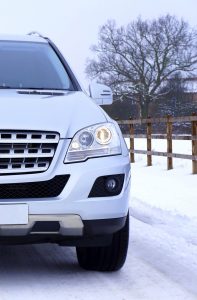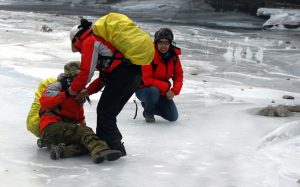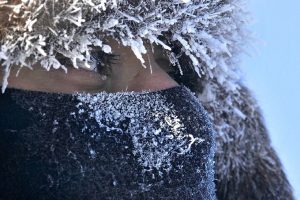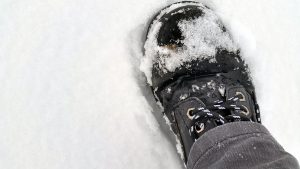In each newsletter we have been exploring the top 8 pieces of workplace health and safety legislation that you should be aware of.
And in this edition of our newsletter, we have chosen to talk about Reporting of Injuries, Diseases and Dangerous Occurrences Regulations 2013 and Provision and Use of Work Equipment Regulations 1998.
The Reporting of Injuries, Diseases and Dangerous Occurrences Regulations (RIDDOR) require you to report wide-ranging work-related incidents, diseases and injuries to the Health and Safety Executive (HSE). You can also report these to the environmental health department of your local authority.
Under the regulations, you are required to have an accident book where you record the date and time, who was involved and affected, and the nature of any incident, along with a note of what happened.
You must report:
Provision and Use of Work Equipment Regulations 1998 (PUWER)
For this regulation, you need to:
The winter months entail specific health and safety concerns that pose threats to employees. Although these hazards can be particularly acute for outdoor workers, there are also many potential dangers within the workplace itself and surrounding areas such as car parks or walkways.
As an employer, you have a duty to keep your workforce safe. But it’s not solely up to you. The best way to prevent injuries associated with winter weather is to adopt the attitude that safety is everyone’s responsibility– whether in large, medium or small organisations.
Employers must initiate safety protocols so that every employee knows how to prevent accidents and injuries, but also understands what to do in the event of an emergency. Reinforce procedures regularly, so a culture of safety first becomes a natural part of how the company operates.
Involve your employees from the start, so they can help identify hazards and work on resolving problems. Inclusion gives you a strong platform for building a culture of safety within your organisation.
There are a number of key areas of winter safety that you should consider providing the safest working environment possible for your employees.
 Business doesn’t stop in winter even when the weather is bad, but it can be disrupted. For instance, if your business depends on deliveries to and from your premises, or a travelling sales force as, everyone one should be prepared and equipped properly for conditions that may include snow, ice, heavy rain and floods.
Business doesn’t stop in winter even when the weather is bad, but it can be disrupted. For instance, if your business depends on deliveries to and from your premises, or a travelling sales force as, everyone one should be prepared and equipped properly for conditions that may include snow, ice, heavy rain and floods.
Vehicle preparation: Vehicles should be fully serviced before the start of winter and anti-freeze checked. If you do this on site, ensure that batteries are fully charged, lights are clean and work, all windows, including windscreens, are clean and wipers are operating as they should. Check that tyres have good tread depth and are at the right pressure and that the brakes work effectively. Regularly check fluids and top up when necessary
Emergency kit: Prepare employees for bad weather with emergency kits. Include a shovel, towrope, sturdy water boots, a hazard warning triangle and a first aid kit. A working torch, de-icer and car blanket should also feature.
Preparedness: Wear warm clothes and take emergency food and a hot drink in a flask on winter journeys. Make sure that there is at least one fully charged mobile phone in the vehicle. Remember to de-ice your vehicle and clear any snow from it before embarking, to ensure visibility is not in jeopardy. Note that it is illegal to drive a vehicle if snow hasn’t been cleared off it.
Weather forecast: Listen to the news or forecasts. If there is impending dangerous weather, and a journey is nonessential, don’t drive. It’s better that you’re safe and time can be made up when conditions improve. If there is snow or ice, adapt your driving to these conditions by reducing speed so you decrease the risk of skidding and being unable to stop quickly.
All employees should take time to learn how to deal with severe winter conditions when driving.
 Tumbles are hazards at any time of year, but winter conditions increase their likelihood for employees unless safety precautions are put in place. Accidents can be expensive if you don’t have a proactive safety plan in place, as workers may be able to get compensation payments if they are injured. You could incur government fines too, so ensure you have good planning in place.
Tumbles are hazards at any time of year, but winter conditions increase their likelihood for employees unless safety precautions are put in place. Accidents can be expensive if you don’t have a proactive safety plan in place, as workers may be able to get compensation payments if they are injured. You could incur government fines too, so ensure you have good planning in place.
Car parks pose problems if they are not cleared properly, whether it’s your own team that does it or a snow removal company. Even stepping out of a car can be hazardous if snow or other debris is blocking a walkway to an entrance, or there is ice on the car park or walkways.
You should always be aware of the potential for danger and have measures in place to reduce the possibility of accidents.
Winter conditions increase the potential for accidents, so your company’s safety plan needs to be fit for purpose. Assess risks, distribute the appropriate information, and ensure that protective equipment is in place.
There are many possible injuries that can occur in poor weather conditions including:
Training for all employees should include awareness of the problems that might arise from adverse weather or environmental conditions. Include instructions about how to mitigate the risks, and the importance of being alert to potentially dangerous situations at all times.
When temperatures drop in winter the risk of carbon monoxide poisoning increases, especially during the first three months of the year. Accidental deaths from this are often due to malfunctioning furnaces or poor ventilation, but they can also occur through the use of portable generators and chain saws. In confined spaces carbon monoxide, an odourless gas, can build up and prove fatal.
It’s the role of the employer to schedule regular operational checks on devices that produce carbon monoxide. In areas where there may be danger, particularly confined spaces, install carbon monoxide detectors. These are essential safety devices that warn anyone in a particular area of high levels of carbon monoxide. Comprehensive alarm systems should always be installed, but there is no substitute for good maintenance of equipment and tools, preventative action, and a workforce well-versed in health and safety procedures.
 If you have workers who spend much of their time outside, raise awareness about the risks of hypothermia and frostbite. This goes for employers and employees. Many people associate these terms with mountaineers or arctic explorers who have been exposed to freezing temperatures. But hypothermia and frostbite occur in far more everyday circumstances, such as extended outdoor work situations without the proper protective clothing.
If you have workers who spend much of their time outside, raise awareness about the risks of hypothermia and frostbite. This goes for employers and employees. Many people associate these terms with mountaineers or arctic explorers who have been exposed to freezing temperatures. But hypothermia and frostbite occur in far more everyday circumstances, such as extended outdoor work situations without the proper protective clothing.
If any of these symptoms occur, seek medical care as soon as is possible. Meanwhile, mitigate potential harm by elevating the affected body part so swelling can be reduced and move the person, where possible, to a warm area. This helps prevent further heat loss. Remove wet clothing and dress affected areas in a dry, sterile bandage. If fingers or toes are suffering, then cotton should be placed between those affected.
Maintain an appropriate ambient temperature in workplace areas. These will differ depending on the environment and the tasks performed there. Office workers who are mainly sedentary will require a warmer temperature, especially during the winter months, whereas workers on a factory floor may get additional warmth from machinery or processes being used. Always monitor temperatures because workplaces that are either too cold or too warm can affect the productivity of employees.
 Personal protective equipment (PPE) should always be available for outdoor workers, especially when they have to undertake their duties in very cold weather. Examples include strong boots, warm socks, wind and waterproof jackets and trousers. These are essential to help keep workers safe. Protective headgear for outdoor work is another crucial requirement to prevent the potential of injury from falling debris or falls.
Personal protective equipment (PPE) should always be available for outdoor workers, especially when they have to undertake their duties in very cold weather. Examples include strong boots, warm socks, wind and waterproof jackets and trousers. These are essential to help keep workers safe. Protective headgear for outdoor work is another crucial requirement to prevent the potential of injury from falling debris or falls.
Working outdoors in bad conditions can be very challenging, so ensure that your employees are properly equipped.
Winter presents multiple health and safety issues. Every season in the working year requires tailored risk assessments and specific protocols. But winter presents distinct threats to employee well-being. Keep your risk assessments up to date, adapt protocol accordingly, train your employees, raise awareness of individual obligations and responsibilities, and provide the safest working environment that you can.
 The Health and Safety Executive (HSE) is contributing to cross-government work being coordinated by the Department for Exiting the European Union to prepare the United Kingdom for exit from the European Union (EU). This includes work to support the Government’s commitment to protect workers’ rights as the UK leaves the EU by ensuring that health and safety regulation continues to provide a high level of protection in the workplace.
The Health and Safety Executive (HSE) is contributing to cross-government work being coordinated by the Department for Exiting the European Union to prepare the United Kingdom for exit from the European Union (EU). This includes work to support the Government’s commitment to protect workers’ rights as the UK leaves the EU by ensuring that health and safety regulation continues to provide a high level of protection in the workplace.
For further information on EU exit is available on the website of the Department for Exiting the European Union
 Don’t exclude anyone
Don’t exclude anyoneWe hope you have a wonderful time!
If you have any questions relating to this newsletter, please contact Walker Health and Safety Services Limited. Info@walkersafety.co.uk 08458340400
Want to share this newsletter?
If you would like to print this newsletter we have created a formatted PDF version. You can download it here, print and distribute it accordingly.